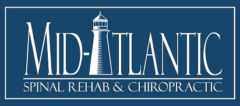
Physical Therapy FAQ: Your Guide To Wellness
Physical Therapy
Physical therapy plays a crucial role in helping individuals recover from injuries, surgeries, or medical conditions, as well as improving overall health and well-being. Whether you’re seeking rehabilitation after an injury or looking to enhance your mobility and quality of life, understanding the fundamentals of physical therapy is essential. In this FAQ blog, we’ll address common questions about physical therapy, its benefits, what to expect during treatment, and how to make the most of your therapy sessions.
What Is Physical Therapy?
- Physical therapy, often referred to as PT, is a healthcare profession focused on improving mobility, function, and quality of life through specialized exercises, manual therapy techniques, and patient education. Physical therapists are licensed healthcare professionals who assess, diagnose, and treat individuals with movement-related problems or conditions.
What Are The Benefits Of Physical Therapy?
Physical therapy offers a wide range of benefits, including:
- Pain relief
- Improved mobility and range of motion
- Enhanced strength and flexibility
- Faster recovery from injuries or surgeries
- Prevention of future injuries
- Management of chronic conditions such as arthritis or back pain
- Promotion of overall health and wellness
Who Can Benefit From Physical Therapy?
Physical therapy is beneficial for individuals of all ages and abilities, including those:
- Recovering from injuries or surgeries
- Dealing with chronic pain or conditions such as arthritis or fibromyalgia
- Seeking rehabilitation after a stroke, heart attack, or other medical event
- Living with neurological disorders such as Parkinson’s disease or multiple sclerosis
- Wanting to improve sports performance or prevent sports-related injuries
- Needing assistance with balance, gait, or mobility issues
What Happens During A Physical Therapy Session?
During a physical therapy session, the therapist will:
- Assess your movement, strength, flexibility, and functional abilities
- Develop an individualized treatment plan based on your goals and needs
- Guide you through exercises, stretches, and therapeutic activities to improve your condition
- Use manual therapy techniques such as massage, joint mobilization, or manipulation to alleviate pain and improve mobility
- Provide education and guidance on proper body mechanics, injury prevention, and home exercise programs
How Long Does Physical Therapy Last?
- The duration of physical therapy varies depending on factors such as the nature and severity of the condition, individual goals, and response to treatment. Some individuals may require only a few sessions for symptom relief or rehabilitation, while others may benefit from long-term or ongoing therapy to manage chronic conditions or maintain function.
What Should I Expect After Completing Physical Therapy?
After completing physical therapy, you can expect:
- Improved function, mobility, and quality of life
- Enhanced knowledge and skills for managing your condition or preventing future injuries
- Continued progress and maintenance through home exercise programs and lifestyle modifications
- Follow-up appointments or periodic evaluations to monitor progress and address any concerns
Physical therapy is a valuable healthcare service that can help individuals recover from injuries, manage chronic conditions, and improve overall quality of life. By understanding the basics of physical therapy, its benefits, and what to expect during treatment, you can make informed decisions about your healthcare and take proactive steps towards better health and wellness. If you have specific questions or concerns about physical therapy, don’t hesitate to reach out to Mid Atlantic Spinal Rehab & Chiropractic for guidance and Catonsville, MD physical therapy.

Chiropractic Help For Pedestrian Injuries
Chiropractic Help For Pedestrian Injuries
A Tesla crashed into a children’s hair salon in Annapolis, injuring four people, including a child, according to the Anne Arundel County Police Department. The incident occurred at Pigtails and Crewcuts: Haircuts for Kids in the Riva Shopping Center on Forest Drive around 3 p.m. Three adults and a child customer were injured. The driver, who remained at the scene, was reportedly attempting to park when the vehicle jumped the curb and crashed into the building. Fortunately, no one was in the immediate vicinity when the car came to a stop in the child’s play area. Emergency crews responded, and the building sustained damage, prompting a building inspector to assess it. The scene was secured, and neighboring businesses offered assistance. It is crucial that anyone who is injured by a car seeks medical treatment immediately and learns how chiropractic care may benefit their healing process.
Seeking Chiropractic Help For Your Injuries
After a pedestrian accident, seeking help from an Annapolis, MD chiropractor is essential for effective recovery and rehabilitation. You may be wondering how chiropractic care can benefit you after such an incident.
Pain Relief And Management
Pedestrian accidents can cause a wide range of injuries, including whiplash, back pain, neck pain, and soft tissue injuries. Chiropractors specialize in diagnosing and treating musculoskeletal injuries, providing targeted adjustments and therapies to alleviate pain and discomfort. By addressing the root cause of your pain, chiropractic care can provide long-term relief and improve your overall quality of life.
Restoring Your Mobility And Function
Injuries sustained in pedestrian accidents can significantly impact your mobility and ability to perform daily activities. Chiropractors use a variety of techniques, including spinal adjustments, therapeutic exercises, and manual therapies, to restore mobility and function to injured areas of the body. By improving your range of motion and flexibility, chiropractic care can help you regain independence and return to your normal activities more quickly.
Prevention Of Secondary Injuries
Without proper treatment, injuries from pedestrian accidents can lead to secondary complications and long-term health issues. Chiropractors focus on addressing underlying imbalances and restoring proper alignment in the spine and joints, reducing the risk of secondary injuries and complications. By addressing these issues early on, chiropractic care can help prevent future problems and promote overall wellness.
Addressing Your Whole Body
Chiropractic care takes a holistic approach to healing, addressing not only the physical symptoms of your injuries but also their emotional and psychological impact. Chiropractors provide compassionate care and support, helping you navigate the challenges of recovery and promoting a positive mindset throughout the healing process. By addressing your physical, emotional, and psychological needs, chiropractic care can support your overall well-being and enhance your recovery after a pedestrian accident.
Choosing The Right Team To Help You
At Mid Atlantic Spinal Rehab & Chiropractic, we understand the unique challenges faced by individuals recovering from pedestrian accidents. Our team of experienced chiropractors is dedicated to providing personalized care tailored to your specific needs and goals. With our expertise and compassionate approach to healing, we’ll help you recover from your injuries and get back to living life to the fullest. When you need help after an accident, call our office.

Physical Therapy For Car Accident Pain
Physical Therapy For Car Accident Pain
The westbound span of Maryland’s Bay Bridge has reopened after a chain-reaction crash involving over 40 vehicles closed all lanes for six hours. The Maryland Transportation Authority reported 23 initial vehicles involved, followed by secondary crashes involving 20 more. Thirteen people were hospitalized, two with serious injuries, though none are believed to be life-threatening. The eastbound span carried traffic in both directions during investigation and wreckage clearance. Two-way operations were prohibited due to fog. The cause of the crash remains unclear. Emergency responders were still clearing the scene nearly five hours after the incident, with cars clustered in the middle of the bridge. If you were injured in a car accident, you may find it helpful to your recovery if you seek help from a physical therapist.
Why Physical Therapy May Be Right For You
After experiencing a car accident, seeking help through Bowie, MD physical therapy is crucial for recovering from any resulting injuries. There are many reasons why you should consider physical therapy as part of your rehabilitation plan.
Effective Pain Management
Physical therapists are trained to assess your injuries and develop personalized treatment plans to manage pain effectively. Through a combination of therapeutic exercises, manual therapy techniques, and modalities such as heat and cold therapy, physical therapists can help alleviate pain and discomfort caused by car accident injuries.
Restoration Of Mobility And Function
Car accidents can result in injuries that limit your mobility and ability to perform daily activities. Physical therapists specialize in restoring mobility and function to injured areas of the body through targeted exercises and hands-on techniques. Whether you’re dealing with stiffness, weakness, or limited range of motion, a physical therapist can help you regain your independence and quality of life.
Prevention Of Long-Term Complications
Without proper rehabilitation, car accident injuries can lead to long-term complications such as chronic pain, stiffness, and reduced mobility. Physical therapy can help prevent these complications by addressing underlying issues and promoting healing in the affected tissues. By participating in a structured physical therapy program, you can minimize the risk of future problems and ensure a full recovery.
Holistic Approach To Healing
Physical therapy takes a holistic approach to healing, addressing not only the physical aspects of injury but also the emotional and psychological impact of the accident. Physical therapists provide compassionate care and support to help you navigate the challenges of recovery and regain confidence in your body’s ability to heal.
Why Choose Physical Therapy For Your Recovery?
At Mid Atlantic Spinal Rehab & Chiropractic, we understand the importance of comprehensive care in the aftermath of a car accident. Our team of skilled physical therapists is dedicated to providing personalized treatment plans tailored to your unique needs and goals. With our expertise and compassionate approach to healing, we’ll help you recover from your injuries and get back to living life to the fullest. Contact our office today to schedule a consultation and learn more about how physical therapy can benefit you after you have suffered injuries in a car accident.

Chiropractic Help Post Car Accident
Chiropractic Help Post Car Accident
One person died and three others were injured in a two-car crash in Anne Arundel County. The incident occurred around 12:30 p.m. on Route 468 near Muddy Creek Road at Swamp Road. A 1995 Ford pickup towing a trailer was heading south on Muddy Creek Road when a 2001 Honda Civic crossed the yellow line and collided with the truck. A passenger in the Honda, identified as 28-year-old Justin Christopher Dabolish, was pronounced dead at the scene. The Honda’s driver, Kristen Dabolish, sustained serious injuries and was airlifted to MedStar Hospital in DC in critical but stable condition. The occupants of the Ford suffered minor injuries and were taken to Anne Arundel Medical Center in Annapolis. Investigations into the cause of the crash and why the Honda crossed the line are ongoing. If you were injured in a car crash, you may find it beneficial to work with a chiropractor for your recovery.
How Can A Chiropractor Help With Your Recovery?
After being involved in a car accident, many individuals seek chiropractic care to address their injuries and promote healing. At Mid Atlantic Spinal Rehab & Chiropractic, our Capitol Heights, MD chiropractor specializes in providing effective treatment for patients who have been injured in auto accidents. Here are some of the techniques our chiropractors use to help patients recover.
Spinal Adjustments
One of the primary techniques chiropractors use to treat car accident injuries is spinal adjustments. These adjustments involve gently manipulating the spine to realign vertebrae that may have become misaligned due to the force of the impact. By restoring proper alignment, spinal adjustments can alleviate pain, reduce inflammation, and improve mobility.
Soft Tissue Therapy
Soft tissue therapy is another common technique used by chiropractors to address car accident injuries. This technique involves applying gentle pressure to muscles, tendons, and ligaments to release tension, reduce scar tissue formation, and promote healing. Soft tissue therapy can help improve range of motion, reduce pain, and speed up recovery.
Therapeutic Exercises
Chiropractors often prescribe therapeutic exercises to patients recovering from car accident injuries. These exercises are designed to strengthen muscles, improve flexibility, and restore function to affected areas of the body. By incorporating therapeutic exercises into their treatment plans, chiropractors can help patients regain mobility and prevent future injuries.
Electrical Stimulation
Electrical stimulation is a technique commonly used by chiropractors to reduce pain and promote healing in car accident patients. During this therapy, electrodes are placed on the skin near the injured area, and a low-level electrical current is applied. This current stimulates the muscles, nerves, and other tissues, helping to reduce pain, improve circulation, and speed up the healing process.
Ultrasound Therapy
Ultrasound therapy is another effective technique used by chiropractors to treat car accident injuries. This therapy involves using high-frequency sound waves to penetrate deep into the tissues, where they promote healing and reduce inflammation. Ultrasound therapy can help relieve pain, improve circulation, and accelerate the body’s natural healing response.
At Mid Atlantic Spinal Rehab & Chiropractic, our experienced chiropractors are dedicated to helping car accident patients recover from their injuries and regain their quality of life. If you’ve been injured in a car accident, don’t wait to seek treatment. Contact us today to schedule a consultation and learn more about how we can help you heal after you sustained car accident injuries.

Chiropractic Help After Slip And Fall
Chiropractic Help After Slip And Fall
The Washington D.C. and Maryland area has recently experienced significant snowfall, with 2 to 6 inches covering the region, followed by dangerously low temperatures creating a hard freeze and increasing the risk of hazardous ice formation. Officials urged caution, especially for drivers, as slick roads and potential refreezing prompted school closures and delays. Frigid temperatures persisted, prompting Mayor Muriel Bowser to activate a cold weather emergency through Thursday, emphasizing public health concerns. Montgomery County issued a Cold Emergency Alert due to the risk of hypothermia and frostbite.
Pedestrians were warned about black ice, which could lead to injuries. While temperatures may slightly increase Thursday, further snowfall is anticipated later in the week. Residents were advised to stay indoors, check on neighbors, and avoid using gas-fueled devices for heating during the extreme cold.
Chiropractic Care When You Experienced A Slip And Fall
After experiencing a slip and fall accident, seeking care from our Bowie, MD chiropractor at Mid Atlantic Spinal Rehab & Chiropractic can be beneficial in addressing injuries and promoting healing.
Assessment And Diagnosis
One of the key ways a chiropractor can help after a slip and fall accident is by conducting a thorough assessment and diagnosis of your injuries. Chiropractors are trained to identify underlying issues such as misalignments, muscle strains, and joint dysfunction that may be contributing to your pain and discomfort. Through physical examination and diagnostic imaging, we can pinpoint the specific areas of concern and develop a personalized treatment plan tailored to your needs.
Spinal Adjustments
Spinal adjustments are a cornerstone of chiropractic care and can be particularly effective in treating injuries sustained in slip and fall accidents. By realigning the spine and restoring proper function to the nervous system, chiropractic adjustments help alleviate pain, reduce inflammation, and improve mobility. Our skilled chiropractors use gentle and precise techniques to adjust the spine, ensuring a comfortable and effective treatment experience.
Therapeutic Modalities
In addition to spinal adjustments, chiropractors may utilize a variety of therapeutic modalities to support healing and recovery after a slip and fall accident. These may include massage therapy, electrical stimulation, ultrasound, and therapeutic exercises. These modalities help reduce pain, improve circulation, and promote tissue healing, allowing for a faster and more complete recovery. Our chiropractors tailor treatment plans to address your specific needs and goals, providing comprehensive care to support your overall well-being.
Seek Help You Can Be Confident In
If you’ve been injured in a slip and fall accident, our team at Mid Atlantic Spinal Rehab & Chiropractic is here to provide comprehensive care tailored to your needs. Our goal is to alleviate your pain, promote healing, and support your recovery journey so you can regain mobility and get back to enjoying life to the fullest. When you work with our team, you know you are getting care that focuses on helping to alleviate your pain and recover long-term. Contact us today to schedule a consultation and take the first step towards recovery.

